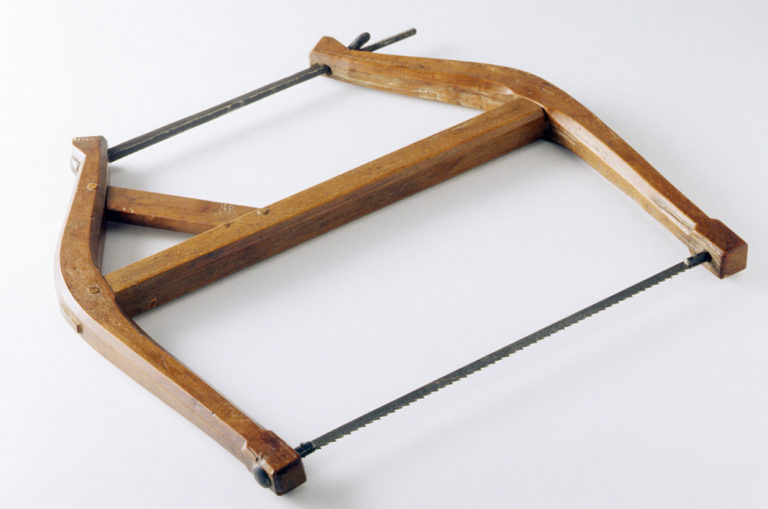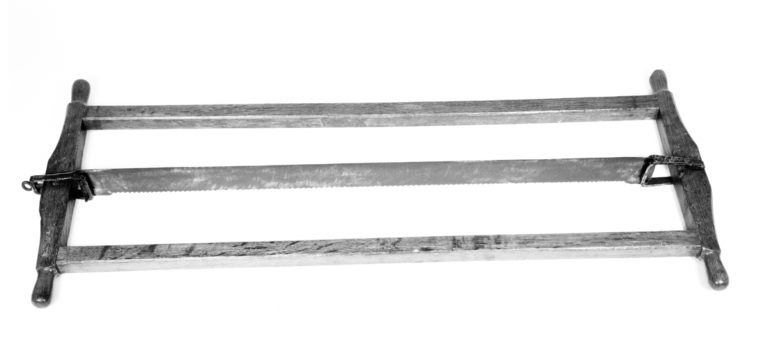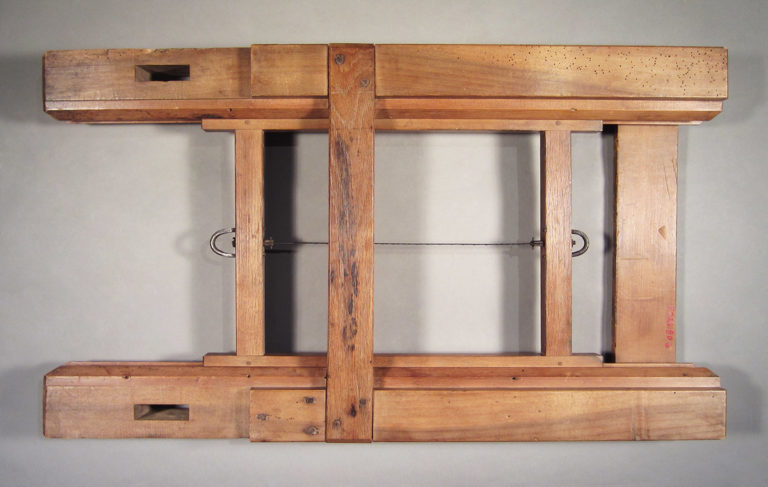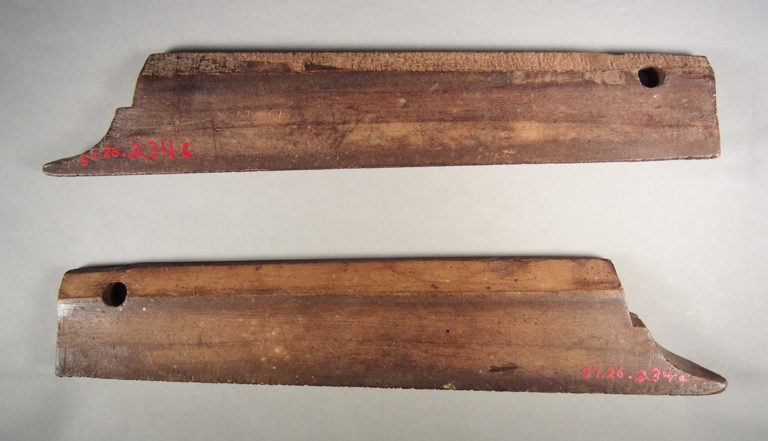Saw
A versatile tool, a Bone or Frame Saw is made with projecting handles that turn its blade to cut in any desired direction. The Dominys' bow saw was used to follow the lines scratched on a wood surface around the outline of leg, arm, cresting rail, or splat patterns.
Frame saw, Nathaniel Dominy IV or Nathaniel V (maker), 1770-1830. Cherry; Beech; Iron; Steel. 14.8" (L), 14.1" (W). Museum purchase with funds provided by Henry Belin du Pont, 1957.0026.079


The Dovetail Saw was used for making dovetail joints. Similar to a sash saw, the dovetail saw was made with additional and finer teeth that cuts on the push stroke. Saw blades, made of high-quality steel, were used for different types of saws over and over again. It is possible that it was a sash saw refashioned into its present form by Nathaniel V.
Dovetail saw, 1790-1830. Birch; Steel. 15" (L), 3.8" (W). Museum purchase with funds provided by Henry Belin du Pont, 1957.0026.023
The gripping handles at each end of this veneer-cutting saw clearly indicate that it was designed for two workers, though it is not clear that the Dominys actually used this saw to cut veneer. Nathaniel V made many bedsteads and may have used this saw to cut such stocks.
Veneer saw, Nathaniel Dominy IV (maker), 1770-1830. White pine; Iron; Steel. 57.7" (L), 24" (W). Museum purchase with funds provided by Henry Belin du Pont, 1957.0026.081


Nathaniel V made the frame of his gate or spring saw to fit into the bed of the spring-pole lathe already in the shop. The lathe cord was tied to the iron staple on top of the sash frame. Another cord was tied to a staple on the underside of the sash frame and then fastened to the lathe treadle. By pumping the treadle with the foot, the sash frame, or gate, could be made to move up and down.
Gate saw, Nathaniel Dominy V (maker), 1800-1830. White pine; Tulip poplar; Red oak; Birch; Steel. 29.8" (L), 17" (W). Museum purchase with funds provided by Henry Belin du Pont, 1957.0026.080
Only one complete handsaw used by the Dominy craftsmen has survived. Hand saws are used to cut pieces of wood into different shapes and, or, sizes.
Hand saw, 1790-1830. Beech, American; Iron. 30" (L), 4.3" (W). Museum purchase with funds provided by Henry Belin du Pont, 1957.0026.022

Just as files were never discarded, broken or worn saw blades were continuously put to use in smaller forms. The keyhole saw came into being in this manner, and its name derives from the fact that it was used to cut small circular courses such as those needed for key-, latch-, and lockholes.
The Saw Clamp or Whetting Block were used to hold saw blades in a vise while they were being sharpened. The teeth were shaprened by a trianglar file.
Saw clamp, Nathaniel Dominy IV (maker), 1765-1800. Maple, soft. 14.56" (L). Museum purchase with funds provided by Henry Belin du Pont, 1957.0026.234

